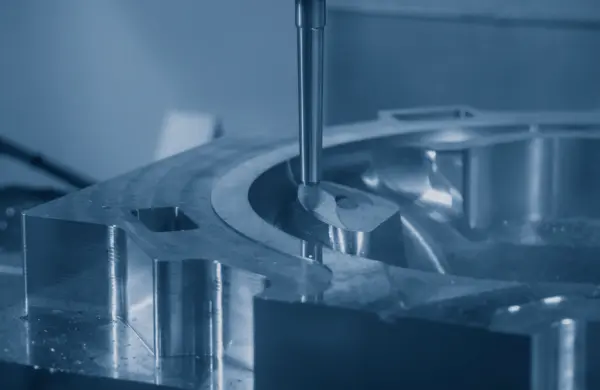Die-cast aluminum molds are vital for boosting production efficiency in manufacturing. This article offers industry professionals advanced insights to enhance efficiency with die-cast aluminum molds. Topics covered include design considerations, material selection, mold importance, preheating techniques, maintenance, and optimizing the production process. Implementing these strategies improves productivity, cuts costs, and maintains product quality
Effective Design for Die Cast Aluminum Mold
Designing an effective die-cast aluminum mold involves considering several key factors. Before the die casting process, a Design for Manufacturing (DFM) analysis should be conducted to identify potential issues early on and optimize production.
- DFM Analysis: Identify design issues affecting production efficiency, cost, and product quality. Consider factors like part complexity, material flow, draft angles, undercuts, wall thickness, filets, bosses, hole/window placement, and shrinkage porosity.
- Material Selection: Choose aluminum alloys based on weight, conductivity, fluidity, melting point, strength, and dimensional stability.
- Uniform Wall Thickness: Maintain consistent wall thickness for casting integrity, efficient metal flow, and reliable mechanical properties.
- Parting Lines, Draft Angles, Ejector Pins, Filets, and Radii: Position these elements thoughtfully to enhance ejection success and minimize defects. Draft angles aid removal, while filets and radii improve metal flow and structural integrity.
- Undercuts and Successful Ejection: Minimize undercuts to avoid complexity and costs. If necessary, strategically place them for successful ejection without damage.
- Bosses and Ribs: Incorporate well-designed bosses and ribs to enhance metal flow and increase strength without excessive material. Ensure drafts and fillets for optimal results.
- Shrinkage Porosity Reduction: Implement techniques like core placement and squeeze pins to minimize shrinkage porosity defects.
Optimal Material Selection for Die Cast Aluminum Mold
Choosing the right materials for die-cast aluminum molds is vital for their lifespan. Optimal selection, considering cavity needs and heat treatment, can enhance longevity and prevent issues.
- Cavity Material: Picking mold material is key, factoring in conductivity, wear resistance, polishability, and machinability. Common choices: H13 steel for high-volume or P20 steel for lower volumes.
- Heat Treatment: Proper treatment boosts mold hardness and toughness, extending lifespan. Techniques like pre-hardening, quenching, and tempering enhance performance and prevent cracks or early failure.
Importance of Mold Design in Production Efficiency
Effective mold design is crucial for efficient die-cast aluminum production. Key factors to consider include:
Mold Strength: Use suitable materials and manufacturing processes to withstand high pressures during casting, reducing deformation or failure risk.
Slider Locking Block Strength: Ensure strong sliders to maintain dimensional accuracy and prevent deflection during the injection.
Cavity Sealing Surface Strength: Use techniques like nitriding or hard chrome plating for robust sealing surfaces to resist deformation and leakage.
Cooling Design: Incorporate efficient cooling channels for uniform temperature distribution, shorter cycle times, and improved production efficiency. Conformal cooling can enhance heat transfer.
Advanced Technology Usage: Implement simulation software for virtual testing, reducing lead time and minimizing design iterations before creating physical prototypes.
Preheating and Maintenance of Die-Casting Molds
Preheating molds before high-temperature casting is vital to prevent cracking due to thermal shock. Proper maintenance and usage techniques also enhance production efficiency.
- Preheating Techniques: Use blow torches or gas heating for complex designs and slow press shots for simpler ones.
- Mold Maintenance: Regularly clean, lubricate, inspect cooling channels, and repair any damage to ensure mold longevity and performance.
Optimizing Production Process for Die Cast Aluminum Mold
- Minimizing Material Usage: Design parts with appropriate wall thicknesses to reduce material consumption without compromising integrity. Implement efficient gating systems to minimize metal wastage.
- Reducing Solidification Time: Optimize cooling channels and apply insulating coatings to shorten solidification time, leading to faster cycle times and increased efficiency.
- Meeting Performance Requirements: Implement quality control measures throughout the production process to detect defects early and maintain consistent quality standards.
To enhance die-cast aluminum production efficiency, businesses focus on design, material selection, mold considerations, preheating, maintenance, and process optimization. Employ DFM analysis, choose appropriate materials, and implement thoughtful die cast mold design for productivity, cost reduction, and product quality. Preheating and regular maintenance further improve efficiency, ensuring optimal manufacturing results.
Explore Zetwerk’s Manufacturing Services
Zetwerk offers a comprehensive range of manufacturing services, including die casting and more. With their aluminum expertise die casting molds, they can help you optimize production efficiency and improve product quality. Visit the Zetwerk Knowledge Hub for more information on manufacturing processes.




FAQs
Selecting the ideal aluminum die-casting mold involves factors like design needs, part intricacy, material traits, and cost efficiency. Zetwerk’s specialists assist in choosing the best outcomes.
Design considerations for optimal part manufacturing include uniform wall thickness, appropriate parting line placement, draft angles for easy ejection, integration of bosses and ribs, minimizing undercuts, and reducing shrinkage porosity. Zetwerk’s knowledge base offers in-depth insights into these considerations.
To reduce shrinkage porosity in die-cast aluminum mold products, consider using metal-saving cores, thinner sections, squeeze pins, and flat and vertical ribs. Zetwerk’s experienced team can provide specific recommendations based on your project requirements.
Mold strength, gate speed optimization, slider locking block strength, cavity sealing surface strength, and cooling design optimization are key factors that should be considered during mold design to improve production efficiency. Zetwerk’s expertise ensures efficient mold designs.
Preheating molds prevents cracks in high-temperature casting. Trust Zetwerk for expert guidance on preheating and maintenance to enhance efficiency and prolong mold life.







